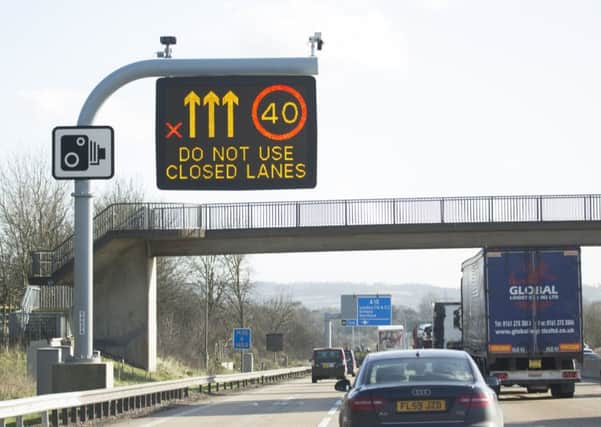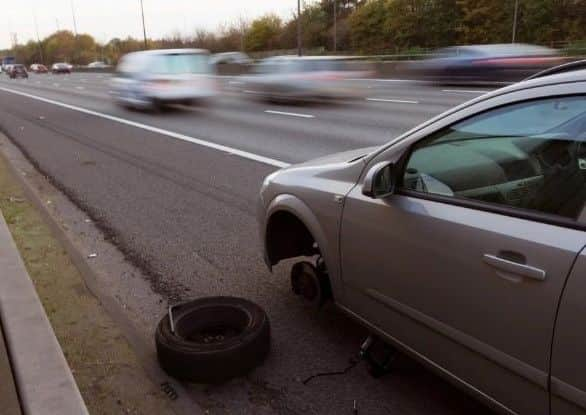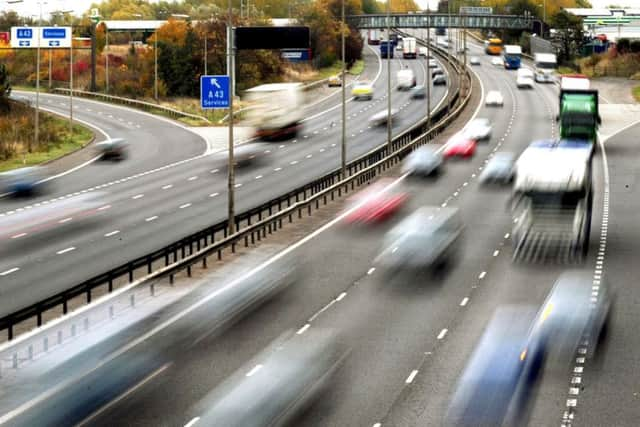Time to end catastrophic smart motorways and put safety first - Anne McIntosh


At that time, I expressed in the strongest possible terms real and grave concerns on safety grounds, as smart motorways clearly pose an immediate danger to the drivers and occupants of cars — particularly where they might break down on a hard shoulder that is being used as a running lane — as well as to other motorway users.
While the existing road structure may have been deemed to lead to congestion, that a broken-down vehicle could clog up what was essentially used for emergency purposes as a hard shoulder was surely unconscionable.


Advertisement
Hide AdAdvertisement
Hide AdThe Department for Transport appears to use a formula based on a points system to assess road safety elements. Points are allocated according to the number of casualties or fatalities caused by an unsafe road either to justify motorway improvements or the construction of a roundabout.
If the formula of the points-based allocation is not met, nothing will happen. I know this to be the case with roundabouts from personal experience. Many people before me had campaigned for a roundabout to be built on the northern access to the town of Easingwold in the former constituency of the Vale of York.


Advertisement
Hide AdAdvertisement
Hide AdMy predecessors had been very vocal in this regard. On election day 1997, three people were killed at the exact spot of the requested roundabout.
As a result of that tragedy, the requisite number of casualties had been reached and points satisfied, and the roundabout was built.
As I understand it, there are currently three types of smart motorway scheme: all-lane running, dynamic hard shoulder. and controlled motorways.
The Highways Agency surely believed at the time that the design would be as safe as existing motorways, but it recognised the increasing risk of a vehicle breaking down in a live traffic lane.
Advertisement
Hide AdAdvertisement
Hide AdHighways England, as it became, estimates that congestion on motorway and major road networks in England costs £2bn every year, yet it acknowledges that 25 per cent of that congestion results from incidents on those motorways.
The safety record of smart motorways was not good and has deteriorated. Thirty-eight people died on smart motorways in the five years to January this year. On one section of the M25, the number of near-misses since the hard shoulder was removed in April 2014 increased from 72 in 2014 to almost 1,500 in 2019. That is staggering.
Clearly, every fatality represents a human tragedy and wasteful loss of life. I want to refer to just one: the case of a mother who was killed on the M6 elevated area. The driver pulled over, but the hard shoulder was in use as a dynamic lane where there was no emergency refuge area or exit for 2.5 miles. I would say that that death was preventable.
Cars which break down in a live lane leave occupants fearful whether they can safely exit the vehicle or whether they will be spotted if they remain in it. Highways Agency figures show that it takes on average 17 minutes to reach a vehicle in such circumstances.
Advertisement
Hide AdAdvertisement
Hide AdA welcome pause came on 30 January this year when the Transport Secretary (Grant Shapps) stated that the M20 and other stretches of road will not be opened as planned as smart motorways until the outcome of the Government review is known.
I want to take a moment to consider the alternatives, of which there are essentially three. First, I know that many such as the AA would scrap smart motorways and hard-shoulder running lanes and revert to using hard shoulders as they were originally intended, allowing police, ambulance, fire and other emergency vehicles to access injured occupants as quickly as possible.
The second option is to increase the number of existing emergency refuge areas so that, in the event of a breakdown, there is more chance of a vehicle reaching the emergency refuge area.
Thirdly, we could widen existing carriageways or increase the number of lanes from three to four, albeit they may be narrower.
Advertisement
Hide AdAdvertisement
Hide AdHow will such improvements be paid for? I urge the Government to consider spending road tax revenues on improving road safety and investing in an alternative infrastructure to smart motorways, thereby making our roads safer.
Smart motorways may have been considered as safe as traditional motorways, but that has been proved not to be the case. Even when they were initially piloted, it was known that they could have been safer. It is unacceptable that cost appears to have been chosen over road safety, and what a cost it has been. Now is the time to end the speculation, to end this catastrophic experiment and to put safety first.
Cost and saving money must not trump road safety.
Baroness McIntosh of Pickering is a Tory peer who led a House of Lords debate on smart motorways. This is an edited version.